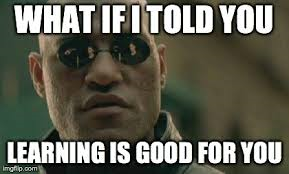A Summary of the Videos: The students are fond of writing in their practice books; however, they prefer writing on blogs. This gives them the opportunity to showcase their hard work. It is rewarding to them when they have their very own family members comment on their posts. The students get the opportunity to grow and improve their writing skills via public blog pages. With these blogs the kids use it as a sort of online portfolio that shows their progress. A very strict rule that the kids enforce themselves is that when commenting you must be nice. The students organize all of their collective blogs on a class blog like our own in EDM 310. Another tool they used were Wikis, when the students didn't know something they looked it up and found the information themselves. They also utilized Skype in order to converse with students around the world.
Part 1, Part 2, Part 3 Overview:
Mrs. Cassidy's videos provided an abundance of information about the usefulness of blogging as well as the importance of having a strong and sturdy team. She has had a successful 5 years blogging with her students. The parents especially like that it broadcasts the students hard work they also are able to keep tabs on their progress. Another great point is that it becomes more hands on with technology and enticing than the usual pen and paper. When thinking of the most important aspect of a blog for the students, Mrs. Cassidy says that they need an audience above everything else. With an audience, students then are more inclined to push themselves to perform better. My favorite little tool Mrs. Cassidy uses with her students is the cluster map tool. It shows the students where in the world people are viewing their blog to show them their impact. The lessons you are able to cover with the use of blogging are reading, writing, videos, and commenting. The use of research via the web is a wondrous tool for students. Mrs. Cassidy was asked if "Teachers need to be Technology Literate?", her response was "Yes, technology is here to stay". The growth of technology today provides bigger and better outcomes in the classroom. Using online networking new teachers can connect and advance together. Twitter is a very useful way to do so. Mrs. Cassidy says that we should always keep in touch through technology. She goes on to inform you that you should go where your interests are. This way you are educated and interested in the conversation and are able to comment and start a network amongst similar minds. She uses the term "piggybacking" which may sound negative but put into context it is not cheating off of another's works. It's a collaborative learning process using technology as its medium. A major issue she addresses which is privacy and safety. She teaches her students to not put out their last name, pictures of themselves, and to be aware of what websites they are visiting.
My Classroom:
Mrs. Cassidy definitely has a lot of great insight for future educators. In my classroom I will definitely use blogs so that students can broadcast their written works and view their progress. As well, we will use Skype. Possibly in order to Skype an author or even students around the world to teach each other about different cultures. The teachers and other experts can solidify my lessons and help drive home any subject matter we may be discussing at the time. The class as a whole can think together on a driving question to start a research quest and a discussion. I would also use Wiki so that students can research and collaborate with each other.









